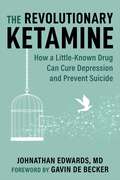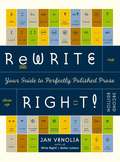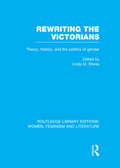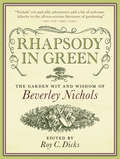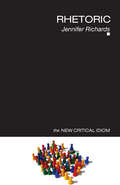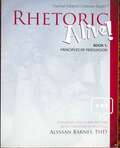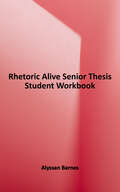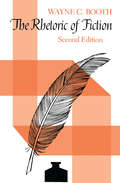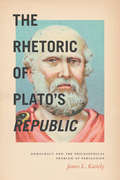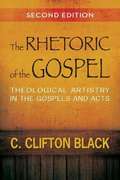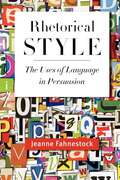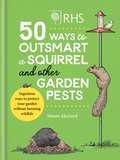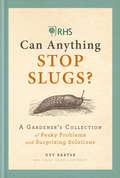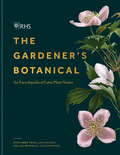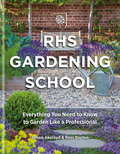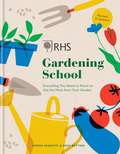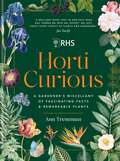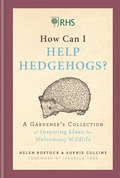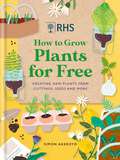- Table View
- List View
The Revolutionary Ketamine: The Safe Drug That Effectively Treats Depression and Prevents Suicide
by Johnathan EdwardsThis isn't a new drug, but it's now being used to treat depression with amazing results. What exactly is it? Is it safe? Is it right for you or your loved one? Suicide captures everyone&’s attention. Suicide is a tragedy usually preceded by plenty of pain. About 1 million go through with the act each year. Imagine if your loved one is determined to end their life, and you could get them help. After reading Revolutionary Ketamine, you will understand: Suicide&’s devastating cost to society and how to prevent it Why children and adolescents are committing suicide How ketamine stops suicide in its tracks Suicide is the stuff of other people&’s nightmares until it happens to someone you love. Time simply stops, leaving you wondering what could have been done. Suicidal ideations hijack our brains, telling us to end our lives prematurely. What if we could remove this hijacking device? Ketamine is the one drug we have today that can safely halt suicidal ideations, yet most have never heard of it. To those who say more studies are needed to know if ketamine helps with suicidal ideations and depression, I offer you this admonition before trying the drug. If you are suffering from depression and suicidal ideations, the risk versus reward is clearly in favor of using ketamine now. Don&’t wait. Dr. Edwards, the author of Revolutionary Ketamine, is committed to helping those who need never become statistics at all and will equip you with the tools to save your loved one&’s life, or possibly your own.
Rewrite Right!: Your Guide to Perfectly Polished Prose
by Jan Venolia Ellen SasakiEveryone knows that writing can be improved by the simple process of reviewing, editing, and rewriting, but many struggle with how to go about critiquing their own work-be it a letter to a friend, an important business document, or an academic essay. Fortunately, help is at hand in REWRITE RIGHT!, the definitive guide to polishing your prose. According to writing authority Jan Venolia, the skills needed to revise your work are surprisingly easy to learn and a cinch to incorporate into everyday writing routines. This practical guide describes in clear, direct language how to effectively rewrite a report, letter, essay, or article, so that writers of all levels can improve the quality of their work and harness the power of language.From the Trade Paperback edition.
Rewriting the Victorians: Theory, History, and the Politics of Gender (Routledge Library Editions: Women, Feminism and Literature)
by Linda M. ShiresThis collection of essays, both feminist and historical, analyzes power relations between men and women in the Victorian period. This volume is the first to reshape Victorian studies from the perspective of the postmodern return to history, and is variously influenced by Marxism, sociology, anthropology, and post-structuralist theories of language and subjectivity. It analyzes the struggle for legitimacy and recognition in Victorian institutions and the struggle over meanings in ideological representation of the gendered subject in texts. Contributors cover diverse topics, including Victorian ideologies of motherhood, the male gaze, the cult of the male child genius in narrative painting, the press, and Victorian women and the French Revolution, discussing both well-known and less familiar Victorian texts.
Rhapsody in Green: The Garden Wit and Wisdom of Beverley Nichols
by Beverley Nichols Roy C. DicksBeverley Nichols (1898–1983) was a prolific author, playwright, composer, and media personality. Though much of his work has been forgotten, his garden writing has stood the test of time. His amusing anecdotes, poetic contemplations, and penetrating observations speak to all gardeners—from houseplant killers to nursery professionals—and capture the joy, heartache, and hilarity of gardening.Rhapsody in Green speaks to the true spirit of Beverley Nichols. Compiled by Roy C. Dicks and drawn from fifteen of his best titles, these carefully selected passages offer a tantalizing taste of Nichols's humor, passion, and poetry. Designed for easy browsing and casual reference, it is organized by subject, including favorite plants, despised plants, and the secrets to successful gardening. Readers will also delight in William McLaren's original line drawings spread throughout the text. A must-have for Nichols fans, gardeners, and plant lovers.
Rhetoric (The New Critical Idiom)
by Jennifer RichardsRhetoric has shaped our understanding of the nature of language and the purpose of literature for over two millennia. It is of crucial importance in understanding the development of literary history as well as elements of philosophy, politics and culture. The nature and practise of rhetoric was central to Classical, Renaissance and Enlightenment cultures and its relevance continues in our own postmodern world to inspire further debate.Examining both the practice and theory of this controversial concept, Jennifer Richards explores: historical and contemporary definitions of the term ‘rhetoric’ uses of rhetoric in literature, by authors such as William Shakespeare, Mary Shelley, William Wordsworth, Jane Austen, W.B. Yeats and James Joyce classical traditions of rhetoric, as seen in the work of Plato, Aristotle and Cicero the rebirth of rhetoric in the Renaissance and the Enlightenment the current status and future of rhetoric in literary and critical theory as envisaged by critics such as Kenneth Burke, Paul de Man and Jacques Derrida. This insightful volume offers an accessible account of this contentious yet unavoidable term, making this book invaluable reading for students of literature, philosophy and cultural studies.
Rhetoric Alive! Book 1: Principles of Persuasion
by Alyssan BarnesA one-semester or yearlong course for students in grades 10-12. Rhetoric Alive! Book 1: Principles of Persuasion, written by Alyssan Barnes, an experienced rhetoric teacher with a PhD in rhetoric, is a clear, compelling, and delightful text on rhetorical theory and practice. The highly engaging Rhetoric Alive! explores the principles of winsome speech as developed in the foremost text on persuasion, Aristotle's Rhetoric. The fifteen chapters of Rhetoric Alive! step through the essential components of persuasion: the three appeals; Ethos (speaker's credibility), Pathos (audience's emotion), and Logos (argument's reasoning), the three types of speech; Deliberative (exhort or dissuade), Ceremonial (praise or blame), Judicial (accuse or defend), and the five canons; Invention, Organization, Style, Memory, Delivery. Each chapter includes an exemplary classic text for analysis and discussion, spanning from Pericles's 'Funeral Oration' to Martin Luther King, Jr.'s, 'Letter from Birmingham Jail.' Students also have plenty of practice developing their own rhetorical skill through weekly workshops, imitation assignments, and oratory presentations.
Rhetoric Alive! Senior Thesis Student Workbook
by Alyssan BarnesA yearlong course for grades 11-12 The senior thesis is a capstone project, the crowning achievement in a student's academic journey. In completing the thesis, students bring all that they've learned, such as reading, writing, and arguing, to bear on one issue. They learn the background of the topic, analyze other people's arguments, and synthesize their findings and discoveries, putting it all together to form a true, good, and beautiful whole. Through the use of workshops, assignments, and presentation practices, the Rhetoric Alive! Senior Thesis workbook walks students step-by-step through the process of writing and then delivering a thesis. Students will gradually draft the six parts of the thesis introduction (exordium), statement of facts (narratio), thesis statement (partitio), argument (confirmatio), counterargument (refutatio), and conclusion (peroratio) as they are taken through the thesis process from start to finish, from choosing a topic to crafting a snappy title, and everything in between. Versatile and straightforward, this text can be used by students who are only writing a thesis paper, only delivering a spoken address, or doing both. Additionally, the genius of Rhetoric Alive! Senior Thesis is that it can be utilized by students using any rhetoric curriculum and even by strong students who have not yet studied rhetoric. Rhetoric Alive! Senior Thesis is an all-in-one resource journal/scratch pad/research notebook and rough-draft-to-final-copy writing guide that will equip students to create a strong, compelling, and well-crafted senior thesis. The text is spiral bound so that students can easily draft portions of their theses and take notes in the workbook, either in class or at home. What sets Rhetoric Alive! Senior Thesis apart from other rhetoric texts? -RA Thesis can be used in conjunction with any rhetoric curriculum -RA Thesis uses clear, accessible language -RA Thesis takes students step-by-step through the writing of the thesis, from start to finish -RA Thesis aids students in writing a paper, speech, or both -RA Thesis helps reluctant or struggling writers generate good ideas and organize them well -RA Thesis contains presentation practice and writing workshops in each chapter -RA Thesis supplies tips from former senior thesis students -RA Thesis includes sample student writing and an example of a complete student thesis -RA Thesis brings classical rhetorical theory to bear on a contemporary issue
Rhetoric and Composition
by Steven LynnRhetoric and composition is an academic discipline that informs all other fields in teaching students how to communicate their ideas and construct their arguments. It has grown dramatically to become a cornerstone of many undergraduate courses and curricula, and it is a particularly dynamic field for scholarly research. This book offers an accessible introduction to teaching and studying rhetoric and composition. By combining the history of rhetoric, explorations of its underlying theories, and a survey of current research (with practical examples and advice), Steven Lynn offers a solid foundation for further study in the field. Readers will find useful information on how students have been taught to invent and organize materials, to express themselves correctly and effectively, and how the ancient study of memory and delivery illuminates discourse and pedagogy today. This concise book thus provides a starting point for learning about the discipline that engages writing, thinking, and argument.
A Rhetoric For Writing Teachers 4th Edition
by Erika C. Lindemann Daniel AndersonFrom answering the question "Why teach writing?" to offering guidance in managing group work and responding to assignments, A Rhetoric for Writing Teachers provides a comprehensive introduction to the teaching of writing. Now in a fourth edition, this remarkably successful book features a new chapter by Daniel Anderson on teaching with computers and adds updated material on invention, intellectual development, and responding to students' writing. Describing in straightforward terms the cross-disciplinary scholarship that underlies composition teaching, it opens with chapters on prewriting techniques, organizing material, paragraphing, sentence structure, words, and revising that show teachers how to lead students through composing. Sections on writing workshops, collaborative learning, and instructional technology reflect current views of writing as a social interaction. Chapters on rhetoric, cognition, and linguistics explain theoretical principles that support classroom practices and make teachers' performances more effective. Treating both the theory and practice of writing, this classic book encourages teachers to adopt the methods that best meet their students' needs and to develop a style of teaching based on informed decisions. It provides an extensive updated bibliography--including useful Web sites as well as important books and articles--and an updated table of important dates in the history of composition. A Rhetoric for Writing Teachers, 4/e, offers both prospective and seasoned writing teachers convenient access to influential scholarship in the field and inspires them to examine what it means to teach well.
The Rhetoric of Fiction
by Wayne C. BoothThe first edition of The Rhetoric of Fiction transformed the criticism of fiction and soon became a classic in the field. One of the most widely used texts in fiction courses, it is a standard reference point in advanced discussions of how fictional form works, how authors make novels accessible, and how readers recreate texts, and its concepts and terms—such as "the implied author," "the postulated reader," and "the unreliable narrator"—have become part of the standard critical lexicon. For this new edition, Wayne C. Booth has written an extensive Afterword in which he clarifies misunderstandings, corrects what he now views as errors, and sets forth his own recent thinking about the rhetoric of fiction. The other new feature is a Supplementary Bibliography, prepared by James Phelan in consultation with the author, which lists the important critical works of the past twenty years—two decades that Booth describes as "the richest in the history of the subject."
The Rhetoric of Plato's Republic: Democracy and the Philosophical Problem of Persuasion
by James L. KastelyPlato isn’t exactly thought of as a champion of democracy, and perhaps even less as an important rhetorical theorist. In this book, James L. Kastely recasts Plato in just these lights, offering a vivid new reading of one of Plato’s most important works: the Republic. At heart, Kastely demonstrates, the Republic is a democratic epic poem and pioneering work in rhetorical theory. Examining issues of justice, communication, persuasion, and audience, he uncovers a seedbed of theoretical ideas that resonate all the way up to our contemporary democratic practices. As Kastely shows, the Republic begins with two interrelated crises: one rhetorical, one philosophical. In the first, democracy is defended by a discourse of justice, but no one can take this discourse seriously because no one can see—in a world where the powerful dominate the weak—how justice is a value in itself. That value must be found philosophically, but philosophy, as Plato and Socrates understand it, can reach only the very few. In order to reach its larger political audience, it must become rhetoric; it must become a persuasive part of the larger culture—which, at that time, meant epic poetry. Tracing how Plato and Socrates formulate this transformation in the Republic, Kastely isolates a crucial theory of persuasion that is central to how we talk together about justice and organize ourselves according to democratic principles.
The Rhetoric of the Gospel
by C. Clifton BlackRhetorical approaches that examine how the biblical text expresses itself in ways that are beautiful and persuasive have become increasingly popular for the serious study of the Bible. This book introduces students of the New Testament to classical rhetorical analysis by exploring the gospels and the book of Acts and the development of early Christian preaching.
Rhetorical Style: The Uses Of Language In Persuasion
by Jeanne FahnestockA comprehensive guide to the language of argument, Rhetorical Style offers a renewed appreciation of the persuasive power of the English language. Drawing on key texts from the rhetorical tradition, as well as on newer approaches from linguistics and literary stylistics, Fahnestock demonstrates how word choice, sentence form, and passage construction can combine to create effective spoken and written arguments. With examples from political speeches, non-fiction works, and newspaper reports, Rhetorical Style surveys the arguer's options at the word, sentence, interactive, and passage levels, and illustrates the enduring usefulness of rhetorical stylistics in analyzing and constructing arguments.
Rhetoriken zwischen Recht und Literatur: Interdisziplinäre und interkulturelle Zugänge (Literatur und Recht #9)
by Martina Wagner-Egelhaaf Stefan Arnold Marcus Schnetter Gesine HegerDie Beiträge dieses Open-Access-Buchs diskutieren das Verständnis von Rhetorik, mit dem heute in Literatur- und Rechtswissenschaft gearbeitet wird. Sie beleuchten, inwiefern sich die westliche Tradition von rhetorischen Perspektiven aus anderen Sprach-, Kultur- und Rechtsräumen unterscheidet. Während die Rhetorik in antiker Tradition in der Literaturtheorie nach wie vor eine große Rolle spielt, hat sie ihren Status als Leitdisziplin in den Rechtswissenschaften eingebüßt und ist lediglich für Teilbereiche wie Argumentationstheorie und Rechtslogik relevant. Der Band nimmt Recht und Literatur in ihrer gemeinsamen sprachlichen Konstitution ernst und fragt nicht zuletzt nach einem geteilten Grundverständnis von Rhetorik.
RHS 50 Ways to Outsmart a Squirrel & Other Garden Pests: Ingenious ways to protect your garden without harming wildlife
by Simon AkeroydFrom the green-thumbed optimist who views their garden as a calming getaway to those that see backyard life as more of a struggle against weeds and pests, almost all gardeners will meet a creature or two who will drive them to despair.Plenty of gardeners are ready to swear off nasty chemical deterrents and bloodthirsty solutions. But how can you save your squash and uphold your hostas at the same time?50 Ways to Outsmart a Squirrel serves up a smorgasbord of eco-friendly ideas and solutions. They're legal, humane and - best of all - effective. Cut through the old wives tales, save your salt for seasoning, and discover gold-standard, sustainable planting solutions and crop-saving tips from gardeners who know exactly how you feel.
RHS Can Anything Stop Slugs?: A Gardener's Collection of Pesky Problems and Surprising Solutions
by Guy BarterRHS Can Anything Stop Slugs assists with all of the most common problems encountered in a garden - as well as some slightly more unusual ones. The RHS's Chief Horticulturist, Guy Barter, provides expert advice, responding to the questions posed by thousands of gardeners every year.This entertaining and informative guide provides a wealth of information. Feature boxes of interesting facts enable you to really get to grips with the issue at hand.As the cause of a problem is not always apparent, the main symptom is used as the starting point in each section, enabling you to troubleshoot all your garden problems. This is not a dull reference book full of lists - it is an easy-to-read and amusing look at how we battle with nature in our gardens, showing you how to either come out top or to surrender with dignity.
RHS Do Bees Need Weeds: A Gardener's Collection of Handy Hints for Greener Gardening
by Holly Farrell Gareth RichardsRHS Do Bees Need Weeds is packed with more than 100 practical questions and answers to help you become a more eco-friendly gardener, and show you how to adopt a more sustainable way of gardening. The book includes simple, low-cost ideas, from fun projects such as how to build a wormery or a homemade water butt to advice on which plants suit bees best and how to achieve a zero-waste garden.In these pages you will find dozens of solutions to common garden problems as well as inspiring innovations that reduce your gardening consumption, tackle waste and help the environment. Filled with fascinating facts and ideas that will help you make a real difference to the green credentials of your garden, this book is both informative and entertaining, with plenty of I-never-knew-that mini-features. This is a book you and your family need, and one that you'll all enjoy, too.Includes questions such as:- Which features will make my garden greener?- Are my garden lights harmful?- How can a lawn be wildlife-friendly?- Is it ever OK to have a bonfire?- Are there alternatives to plastic?- Can I grow year-round crops?- Is it OK to buy compost?
RHS Gardener's Botanical: An Encyclopedia of Latin Plant Names
by Dr Ross BaytonWith more than 5,000 entries and 350 botanical illustrations.The definitive illustrated reference guide to plant binomials for both gardeners and botanists, RHS Gardener's Botanical is an ideal companion for use in the garden or when selecting new plants. It contains more than 5,000 plant names and an easy-to-use 16-page alphabetical index of common names, with a definition and pronunciation guide for each.Includes features such as 'Genus Spotlight', which provides further details on important genera, and more than 350 beautiful botanical illustrations.An invaluable illustrated guide for gardeners and botanists.
RHS Gardening School: Everything You Need to Know to Get the Most from Your Garden
by Simon Akeroyd Dr Ross BaytonKeen amateur gardeners and aspiring professionals can learn from the expertise of the RHS with this handy guide.It doesn't matter if you're an old hand at gardening or just starting out, there are always things to discover and opportunities to improve, whether it's mastering a new technique or brushing up on your botany.RHS Gardening School is the perfect guide for gardeners who want to learn. Inside you'll find chapters on:Understanding plants Everyday garden care Problem solvingPlanting designGardening through the yearand much more. Hands-on guidance and step-by-step instructions explain topics such as pruning, pest and diseases, weed removal and caring for lawns. Expert gardeners explain the underlying principles in plain English, while clear diagrams and beautiful photographs inspire and inform.Become a better, smarter, more productive gardener with this complete guide to horticulture in one handy book.
RHS Gardening School: Everything You Need to Know to Get the Most from Your Garden
by Simon Akeroyd Dr Ross BaytonKeen amateur gardeners and aspiring professionals can learn from the expertise of the RHS with this handy guide.It doesn't matter if you're an old hand at gardening or just starting out, there are always things to discover and opportunities to improve, whether it's mastering a new technique or brushing up on your botany.RHS Gardening School is the perfect guide for gardeners who want to learn. Inside you'll find chapters on:Understanding plants Everyday garden care Problem solvingPlanting designGardening through the yearand much more. Hands-on guidance and step-by-step instructions explain topics such as pruning, pest and diseases, weed removal and caring for lawns. Expert gardeners explain the underlying principles in plain English, while clear diagrams and beautiful photographs inspire and inform.Become a better, smarter, more productive gardener with this complete guide to horticulture in one handy book.
RHS Horti Curious: A Gardener's Miscellany of Fascinating Facts & Remarkable Plants
by Ann Treneman'A brilliant book that in one easy read has turned me into an 'expert' on just about every aspect of plants and gardening' Joe SwiftWhat is xeriscaping? How do you make a seed bomb? Why should you avoid the gympie-gympie tree? When was the first botanical garden created? What type of tulip was once as expensive as a house?Delve into the lush world of Horti Curious, where you will find the answers to of all of these questions, along with hundreds of other entertaining and enlightening facts. Written by gardener and columnist for The Times, Ann Treneman, with the expert advice of the RHS, every page is a verdant oasis brimming with knowledge and inspiration for gardeners and plant lovers.From forgotten folklore to famous gardeners, and from incredible edibles to poisonous plants, this compendium of curiosities celebrates the diverse wonders of horticulture and botany.Beautifully illustrated with botanical diagrams and graphics, this miscellany will inform and delight gardeners and plant lovers. A 'pick and mix' of horticultural knowledge, it ranges from local to global, filled with maps, historical biographies, scientific explorations, plant profiles, fun and unbelievable facts, recipes and tips.
RHS Horti Curious: A Gardener's Miscellany of Fascinating Facts & Remarkable Plants
by Ann Treneman'A brilliant book that in one easy read has turned me into an 'expert' on just about every aspect of plants and gardening' Joe SwiftWhat is xeriscaping? How do you make a seed bomb? Why should you avoid the gympie-gympie tree? When was the first botanical garden created? What type of tulip was once as expensive as a house?Delve into the lush world of Horti Curious, where you will find the answers to of all of these questions, along with hundreds of other entertaining and enlightening facts. Written by gardener and columnist for The Times, Ann Treneman, with the expert advice of the RHS, every page is a verdant oasis brimming with knowledge and inspiration for gardeners and plant lovers.From forgotten folklore to famous gardeners, and from incredible edibles to poisonous plants, this compendium of curiosities celebrates the diverse wonders of horticulture and botany.Beautifully illustrated with botanical diagrams and graphics, this miscellany will inform and delight gardeners and plant lovers. A 'pick and mix' of horticultural knowledge, it ranges from local to global, filled with maps, historical biographies, scientific explorations, plant profiles, fun and unbelievable facts, recipes and tips.
RHS How Can I Help Hedgehogs?: A Gardener's Collection of Inspiring Ideas for Welcoming Wildlife
by Helen Bostock Sophie Collins'Britain's ten million acres of private gardens add up to a vital haven for wildlife. Chock-a-block with ideas for encouraging wildlife into your plot, this pocket-sized book tells you how to make your off-street parking wildlife-friendly, why you should welcome wasps into the garden and whether you should let ladybirds overwinter in your home. One for budding David Attenboroughs.' - Mail on SundayForeword written by Isabella Tree of the Knepp Wildland Project.RHS How Can I Help Hedgehogs? offers more than 100 ideas for you to help wildlife thrive in your garden. Packed with simple, low-cost ideas that will make a huge difference to the natural world, the book suggests ways to help birds, bees, butterflies, beetles and many other declining species.Hopeful, informative and entertaining, with plenty of 'I-never-knew-that' mini-features, this is a book you and your family need, and one that you'll all enjoy, too. Includes topics such as how to increase the biodiversity of your plot and how to improve your soil without using chemicals.Includes...- Can I make my garden bat-friendly?- Do green roofs work?- Why should I love my weeds?- Should I keep honey bees?- Which flowers are friendliest for moths?- Where's best for a bird box?- Is garden lighting disruptive?...and many more.
RHS How to Grow Plants for Free: Creating New Plants from Cuttings, Seeds and More
by Simon AkeroydIncrease your stock of plants easily and for free by propagating them yourself. RHS How to Grow Plants for Free demystifies the art of taking cuttings and explains the other ways you can multiply your garden plants. Propagating your own plants is fun, inexpensive, and a sustainable way to garden.An introductory section explains the botanical science behind all types of propagation and defines and simplifies the language. The book is then split into self-contained practical chapters detailing each of the different types of propagation. Each chapter includes a selection of 'plant profiles' for the plants best suited to eachpropagation method: - Dividing Plants covers the easiest methods of splitting one plant into several new ones- Saving Seeds introduces how to collect and process seeds from flowers, vegetables, herbs and trees- Cuttings covers how to successfully grow a new plant from an existing one using several different methods for taking cuttings- The Houseplants chapter shows techniques needed to increase your collection.- The final chapters show how to grow new plants from kitchen scraps, and gives ideas on how to make the most of all the new plants you've created by giving them as gifts
RHS How to Grow Plants for Free: Creating New Plants from Cuttings, Seeds and More
by Simon AkeroydIncrease your stock of plants easily and for free by propagating them yourself. RHS How to Grow Plants for Free demystifies the art of taking cuttings and explains the other ways you can multiply your garden plants. Propagating your own plants is fun, inexpensive, and a sustainable way to garden.An introductory section explains the botanical science behind all types of propagation and defines and simplifies the language. The book is then split into self-contained practical chapters detailing each of the different types of propagation. Each chapter includes a selection of 'plant profiles' for the plants best suited to eachpropagation method: - Dividing Plants covers the easiest methods of splitting one plant into several new ones- Saving Seeds introduces how to collect and process seeds from flowers, vegetables, herbs and trees- Cuttings covers how to successfully grow a new plant from an existing one using several different methods for taking cuttings- The Houseplants chapter shows techniques needed to increase your collection.- The final chapters show how to grow new plants from kitchen scraps, and gives ideas on how to make the most of all the new plants you've created by giving them as gifts
